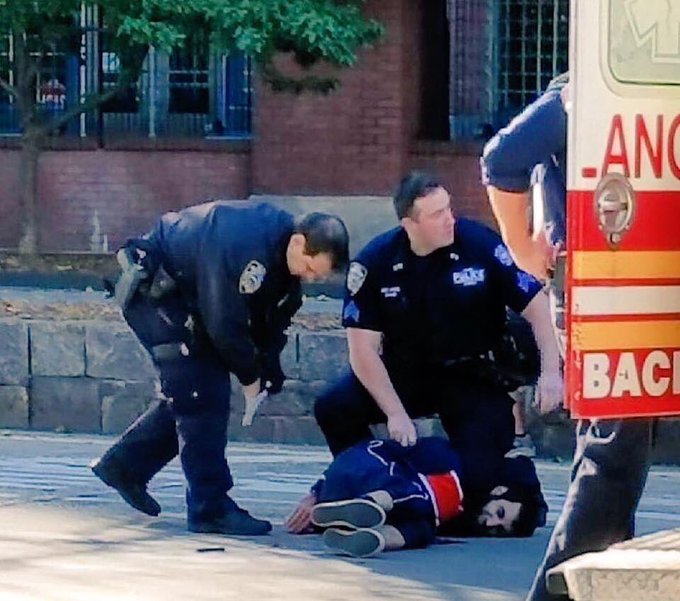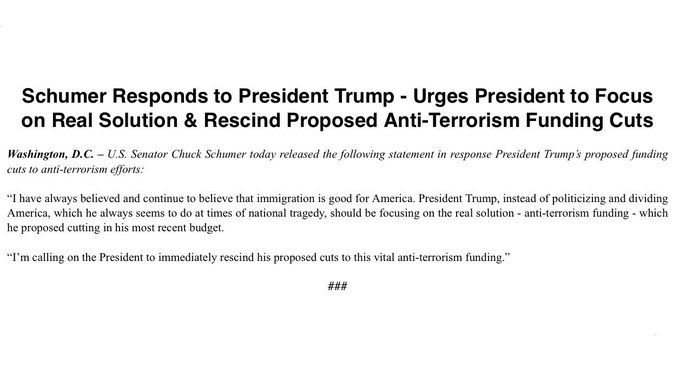
Manhattan terror suspect Sayfullo Saipov, an Uzbek national who came to the United States in 2010, was allowed into the country under the “diversity visa lottery program,” the president revealed on Twitter in a post excoriating the 1990s-era program.
After coming to the U.S. from Uzbekistan, Saipov, 29, worked as a commercial truck and Uber driver, before he allegedly rammed a Home Depot rental truck into a crowd of mostly tourists on a bike path in lower Manhattan, killing at least eight people and injuring more. Officials quickly labeled the truck ramming a “terror attack,” in part because Saipov, who was most recently living in New Jersey, left a note near the truck in which he said he had done it all for ISIS.
This prompted President Donald Trump to renew his call for “extreme vetting” of immigrants, and to go off on the “diversity visa lottery program,” which is administered by the U.S. State Department. Trump said the program was “not nice, it’s not good,” and he was going to work with Congress to get rid of it, and he also criticized “chain migration,” saying Saipov was the point of contact for 23 people “brought in with him.”
“The terrorist came into our country through what is called the ‘Diversity Visa Lottery Program,’ a Chuck Schumer beauty. I want merit based,” Trump tweeted, adding, “We are fighting hard for Merit Based immigration, no more Democrat Lottery Systems. We must get MUCH tougher (and smarter).” However, what exactly is the “Diversity Visa Lottery Program”? Is Trump right that Democratic Sen. Chuck Schumer, of New York, had anything to do with it?
Here’s what you need to know:
1. Sayfullo Saipov Was a ‘Diversity Immigrant’ Through a Program Created in 1990
Sayfullo Saipov came to the U.S. through the Diversity Immigrant Visa Program (which Trump shorthanded as the Diversity Visa Lottery Program), “a State Department program which offers a lottery for people from countries with few immigrants in America.” Within five years, he was on the radar of the feds. ABC News social media editor, Evan McMurry, tweeted, “NYC suspect was interviewed in 2015 by federal agents after being listed as point of contact for two men on counterterrorism list.”
President Trump tweeted that he was stepping up “extreme vetting” for migrants in the wake of the deadly attack. “I have just ordered Homeland Security to step up our already Extreme Vetting Program. Being politically correct is fine, but not for this!” he wrote. However, the Diversity Lottery Program drew his greatest ire. The program is technically called the Diversity Immigrant Visa Program.
According to the U.S. State Department, “The Department of State administers the Congressionally-mandated Diversity Immigrant Visa Program annually. Section 203(c) of the Immigration and Nationality Act (INA) provides for a class of immigrants known as ‘diversity immigrants’ from countries with historically low rates of immigration to the United States.” The Department of State “distributes diversity visas among six geographic regions, and no single country may receive more than seven percent of the available DVs in any one year,” its handout on the program says. The program was introduced by Chuck Schumer in 1990 and George H.W. Bush signed it into law.
2. Saipov Led a Mobile Life After Coming to the U.S., Where He Was Allegedly Radicalized
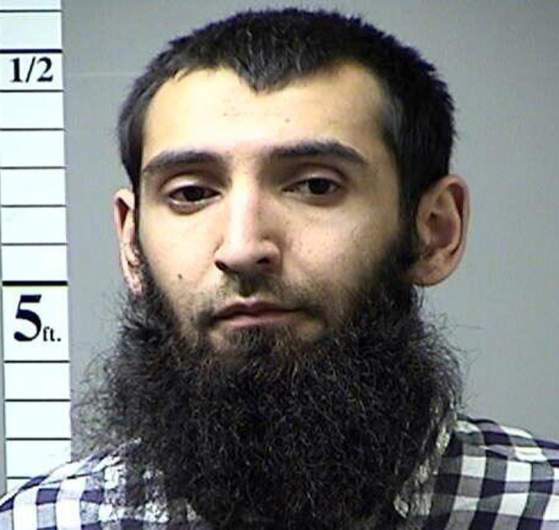
MugshotSayfullo Saipov.
Governor Andrew Cuomo, of New York, said on November 1 that Saipov was “radicalized domestically,” meaning that he came into contact with ISIS propaganda in the U.S., not in Uzbekistan. Details of the suspect’s background were still unfolding, but it emerged that he was on the radar of federal authorities by 2015, although his own history consists of multiple minor traffic violations.
Saipov was carrying identification from Tampa, Florida, but he was recently living in New Jersey and also drove for Uber this summer. In addition, he worked as a commercial truck driver. According to CBS News, the terror suspect is “Sayfullo Habibullaevic Saipov, apparently from Uzbekistan,” a central Asian nation.
He is an Uzbek national who has been in the United States for seven years and who arrived legally, according to NBC and CNN. Online records show he worked as a commercial truck driver and had ties to Ohio as well. According to the New York Post, a friend described Saipov as a “friendly Uber driver.” Although in the country since 2010, Saipov had contact with law enforcement in many states for minor traffic violations, and he had ties to Ohio, Pennsylvania, Missouri, New Jersey, Florida, and Maryland.
Five of those killed along the busy bicycle path were from Argentina. They were together on a trip to New York City to celebrate the anniversary of their graduation and were on a bicycle tour.
It might have been even worse were it not for the heroics of a New York police officer, Ryan Nash, 28, who shot the suspect in the abdomen; witnesses say Saipov leapt from the truck with paintball and pellet guns while shouting “Allahu Akbar.” Saipov survived and is recovering from his wounds.
3. The Diversity Lottery Program Is Poised to Accept 50,000 Immigrants in 2019 & They Are Chosen by Random Computer Drawing
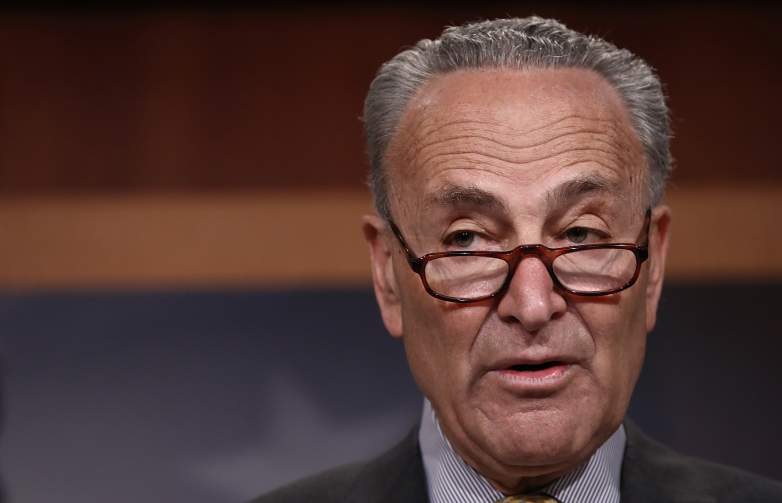
GettyChuck Schumer.
The Diversity Immigrant Visa Program is supposed to accept 50,000 new diversity immigrants in 2019, according to the State Department. “Applicants who are selected in the program (‘selectees’) must meet simple but strict eligibility requirements to qualify for a diversity visa,” according to State. “The Department of State determine selectees through a randomized computer drawing.”
In 2019, natives of the following countries are not eligible to apply, because more than 50,000 natives of these countries immigrated to the United States in the previous five years, says State: Bangladesh, Brazil, Canada, China (mainland-born), Colombia, Dominican Republic, El Salvador, Haiti, India, Jamaica, Mexico, Nigeria, Pakistan, Peru, Philippines, South Korea, United Kingdom (except Northern Ireland) and its dependent territories, and Vietnam. “Persons born in Hong Kong SAR, Macau SAR, and Taiwan are eligible,” The State Department notes.
The applicants must have “at least a high school education or its equivalent, defined as successful completion of a 12-year course of formal elementary and secondary education” or “two years of work experience within the past five years in an occupation that requires at least two years of training or experience to perform.” They also can’t have a criminal history.
Homeland Security describes the program by saying “the Diversity Immigrant Visa Program (DV Program) makes up to 50,000 immigrant visas available annually, drawn from random selection among all entries to individuals who are from countries with low rates of immigration to the United States. The DV Program is administered by the U.S. Department of State (DOS).”
4. Schumer Introduced the Bill That Created the Program With Some GOP Support but Top Republicans Were Already Seeking Its Repeal

U.S. Rep. Tom Cotton (R-AR).
According to Fox News, it’s true that Chuck Schumer was instrumental in creating the Diversity Immigrant Visa Program but that’s just part of the story. At the time, it also had Republican support in some corners. However, Republicans had recently tried to get it repealed before Saipov was arrested.
“The program originated as part of a bill introduced in 1990 by Sen. Chuck Schumer, D-N.Y., then a member of the House,” Fox reported. “Schumer’s measure to make a set number of visas available to “diversity immigrants” from certain countries was absorbed into a larger House immigration bill, which was sponsored by Schumer and 31 others, including several Republicans.”
“The House legislation passed in a bipartisan – but contested – vote, 231-192, while the Senate version containing the ‘diversity immigrants’ part passed more easily, and went on to be signed by then-President George H.W. Bush in 1990,” noted Fox.
Senator Tom Cotton, a Republican, had already introduced a bill to repeal the Diversity Immigrant Visa Program. The bill was introduced in the U.S. Senate in February 2017, according to Congressional records, which says the bill “amends the Immigration and Nationality Act to eliminate the diversity immigrant visa category. The fiscal year limit for refugee admissions is set at 50,000. The President shall annually enumerate the previous year’s number of asylees. The bill defines: (1) ‘immediate relative’ as the under-21 year old child or spouse of a U.S. citizen, and (2) ‘family-sponsored immigrant’ as the under-21 year old child or spouse of an alien lawfully admitted for permanent residence. The worldwide fiscal year level for family-sponsored immigrants is reduced. The bill establishes a nonimmigrant alien W-visa for the parent of an adult (at least 21 years old) U.S. citizen.” Fox News reported that Cotton’s RAISE Act bill “called for its elimination,” referring to the diversity lottery program.
5. Trump Backed the Effort to Repeal the Program in August 2017 & Schumer Has Accused Trump of Politicizing the Manhattan Tragedy
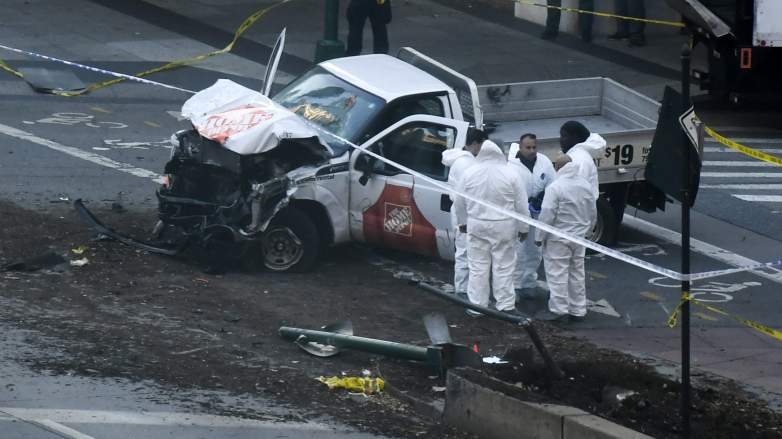
GettyInvestigators inspect the suspect’s truck following the terror attack in New York on October 31.
According to a press release from the White House dated August 2017, President Trump advocated in support of the Tom Cotton measure. Trump’s opposition to the diversity program was part of his larger efforts to seek a merit-based immigration system.
“The RAISE Act eliminates the outdated Diversity Visa lottery system, which serves questionable economic and humanitarian interests,” the White House press release wrote at the time. The release quoted Trump as saying, “As we speak, we are working with two wonderful Senators, Tom Cotton and David Perdue, to create a new immigration system for America. Instead of today’s low-skill system, just a terrible system where anybody comes in.”
In response to Trump’s November 1 criticism after the Manhattan terror attack, Schumer released a statement on Twitter that read, “I have always believed and continue to believe that immigration is good for America. President Trump, instead of politicizing and dividing America, which he always seems to do at times of national tragedy, should be focusing on the real solution – anti-terrorism funding – which he proposed cutting in his most recent budget.”
